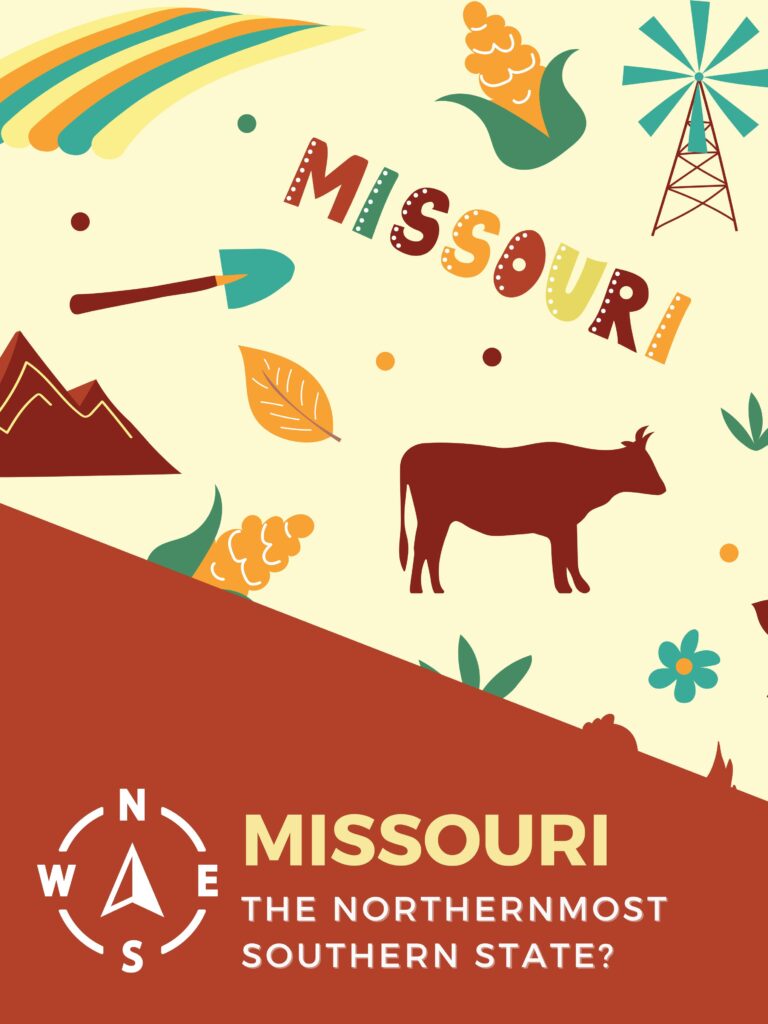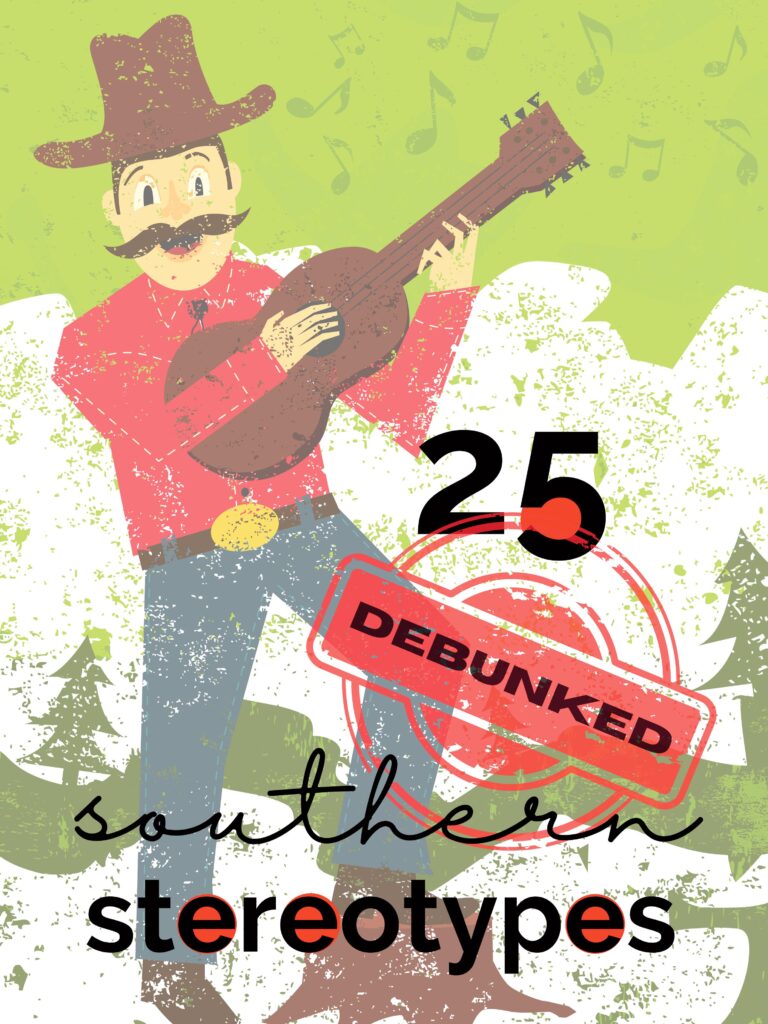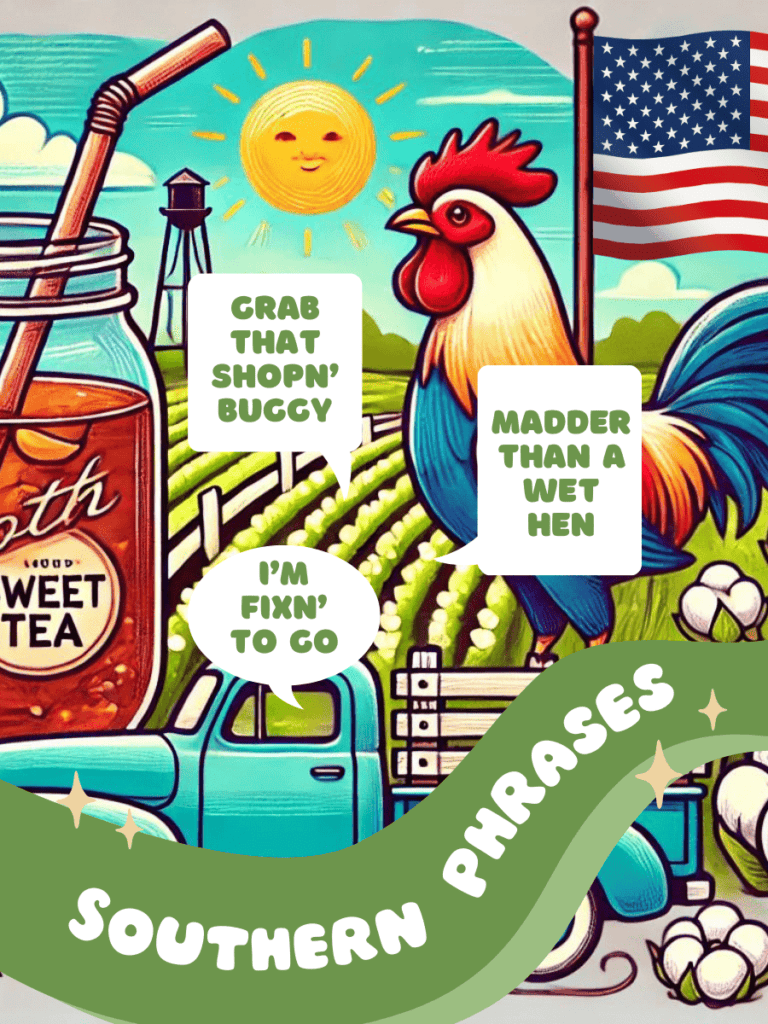What States Are Southern? Complete Guide to Southern States in the US
Even as a lifelong Southerner, I’ve found that defining what states are southern isn’t as straightforward as it may seem.
Known for its humid subtropical climate, gracious hospitality, and rich traditions, the Southern United States has its distinct charm. Yet, when specifying what states are considered southern, the answer isn’t always clear-cut.
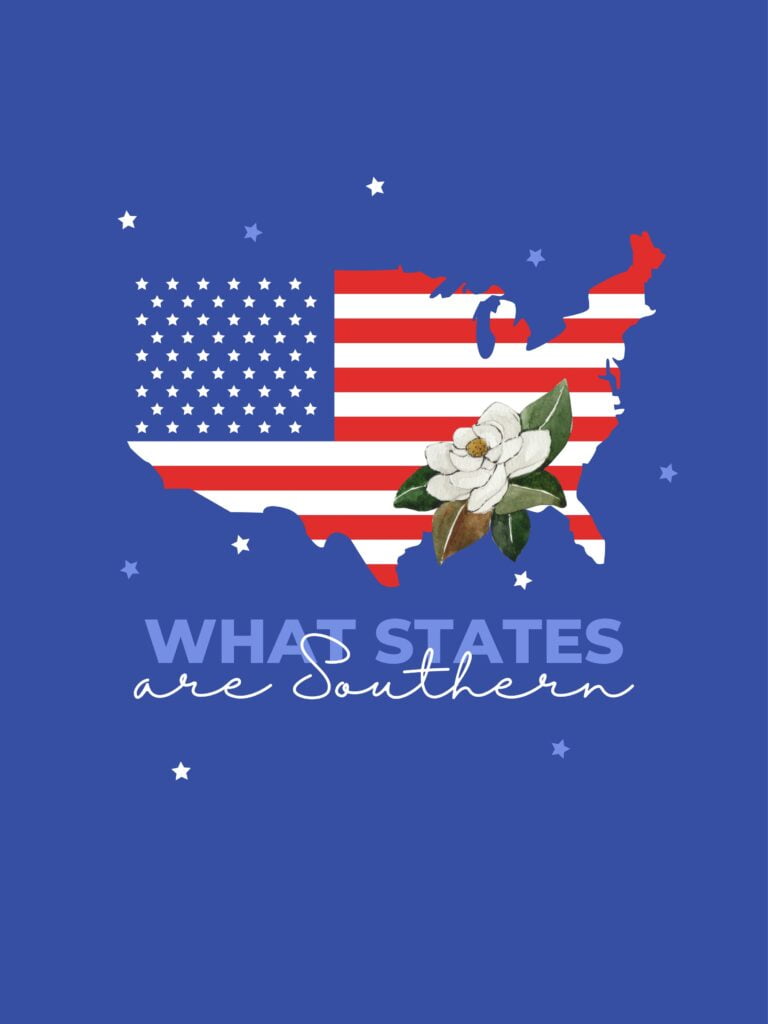
So, if you’re wondering what states are southern, journey with me as we examine their complexities, looking deeper into them geographically, historically, and culturally.
What States Are Officially Considered Southern in the United States?
The states that are considered southern in the United States of America include Texas, Louisiana, Mississippi, Alabama, Florida, Georgia, South Carolina, North Carolina, Virginia, West Virginia, Kentucky, Tennessee, Arkansas, and Oklahoma.
The United States Census Bureau’s definition includes the District of Columbia, Maryland, and Delaware as southern states.
The Council of State Governments includes Missouri as part of the South.
How the Southern United States Is Defined
The Southern United States, also known as The Southland, The Southern States, The South, and occasionally referred to as Dixie (a term with historical and potentially controversial connotations), is recognized as a distinct region.
However, opinions vary on which states it encompasses. Geography, climate, history, and official government definitions contribute to these differing perspectives.
Geographic Features and Climate
The South United States’ unique geography and subtropical climate set it apart. The core states lie in the Southeastern and South Central United States, with features like:
- Bayous
- Coastal plains
- The Appalachian Mountains
The humid climate enables crops like tobacco, cotton, and pecans to thrive in the southeastern United States.
Demographics and Cultural Heritage
The South also stands out demographically. Compared to other regions, it has higher proportions of:
- African Americans
- European Americans descended from early English, Scottish and Irish settlers
The culture blends these and other ethnic groups into a distinctive regional identity.
Major Cities in the Southern United States
The following cities are widely recognized as key economic anchors across the Southern United States:
- Atlanta, Georgia – Corporate headquarters, logistics, finance
- Houston, Texas – Energy, shipping, and manufacturing
- Miami, Florida – Finance, trade, tourism
- New Orleans, Louisiana – Port activity, tourism, energy
- Dallas, Texas – Technology, logistics, and business services
- Memphis, Tennessee – Transportation and logistics
- Tampa, Florida – Healthcare, tourism, shipping
- Charlotte, North Carolina – Banking, finance, and energy
- Nashville, Tennessee – Healthcare, music, and logistics
- Jacksonville, Florida – Logistics, shipping, and finance
NOTE
Nashville and Jacksonville are increasingly recognized as major economic hubs in the modern South.
Key Ports Powering Southern Trade
The Southern U.S. is home to several of the nation’s largest and most strategically important seaports, fueling both domestic commerce and international trade:
- Port of Houston, Texas – The largest U.S. port by total waterborne tonnage, vital for energy exports and petrochemicals
- Port of South Louisiana – One of the largest ports in the Western Hemisphere by tonnage, especially strong in grain and bulk exports
- Port of Corpus Christi, Texas – A leading outlet for U.S. energy exports, including crude oil and refined products
- Port of Savannah, Georgia – A top U.S. container port, serving major import-export activity along the East Coast
- Port of Charleston, South Carolina – One of the Southeast’s busiest ports, supporting trade and regional employment
| Major Economic Cities & Ports in the South | ||
|---|---|---|
| City/Port | State | Economic Role |
| Atlanta | Georgia | Corporate HQs, logistics, finance |
| Houston | Texas | Energy, shipping, manufacturing |
| Miami | Florida | Finance, trade, tourism |
| Dallas | Texas | Technology, logistics, business services |
| Charlotte | North Carolina | Banking, finance, energy |
| Nashville | Tennessee | Healthcare, music, logistics |
| Memphis | Tennessee | Transportation, logistics |
| Jacksonville | Florida | Logistics, shipping, finance |
| Port of Houston | Texas | Largest U.S. port by tonnage |
| Port of South Louisiana | Louisiana | Top bulk and grain export port |
| Port of Corpus Christi | Texas | Major energy export port |
| Port of Savannah | Georgia | Leading container port |
| Port of Charleston | South Carolina | Key Southeast container port |
| © Scribbles and Grits™. All rights reserved. | ||
The Southern United States continues to lead the nation in job growth, with its key cities and ports driving regional economic expansion.
From high-energy exports in Texas to thriving finance hubs in Georgia and North Carolina, the South remains a powerhouse in trade, industry, and innovation.
The Original Southern Colonies
Five original states played a pivotal role in shaping the South and were part of the original thirteen colonies that formed the United States of America:
- Georgia (founded 1732): The last of the original 13 colonies, created as a buffer zone between the British colonies and Spanish Florida
- Virginia (founded 1607): The Colony of Virginia was the first permanent English settlement in North America
- Maryland (established 1632): The Province of Maryland was established by a charter granted to George Calvert, Lord Baltimore
- North Carolina (officially separated 1712): Initially part of the Province of Carolina
- South Carolina (settled 1670, separate colony 1712): Also stemming from the Province of Carolina
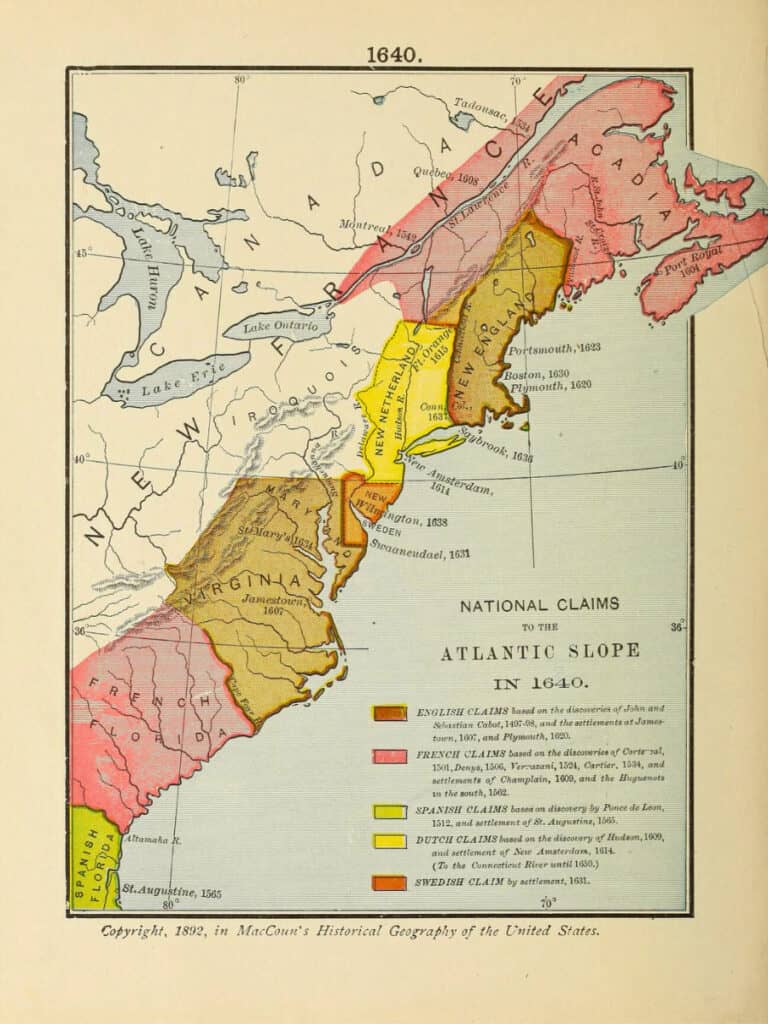

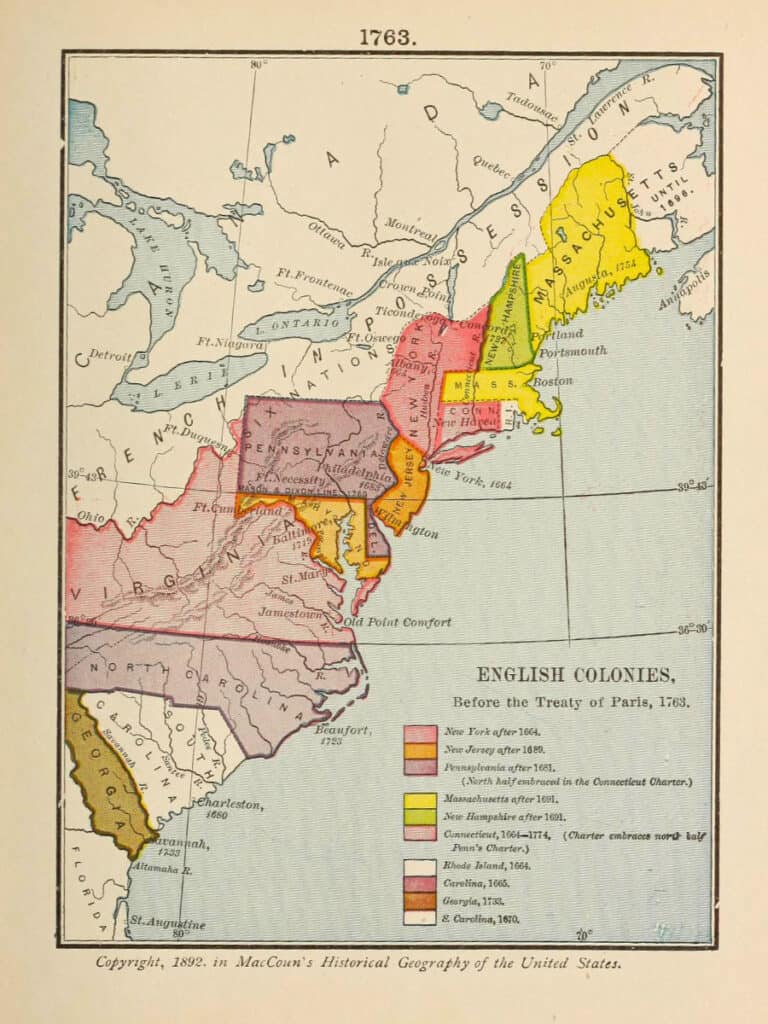
The Core Southern States of the Civil War Era
During the American Civil War (1861-1865), some states withdrew from the Union and established the Confederate States of America.
Maryland, with its past rooted in slave ownership, occupied an unusual position as a border state, trapped between the North and South.
Although there was significant support for the Confederate cause among its inhabitants, Maryland ultimately refrained from withdrawing from the Union during this tumultuous conflict.
Most commonly, definitions of the South place their emphasis primarily on these states. The states that chose to depart from the Union were:
- South Carolina
- Mississippi
- Florida
- Alabama
- Georgia
- Louisiana
- Texas
- Virginia
- Arkansas
- Tennessee
- North Carolina
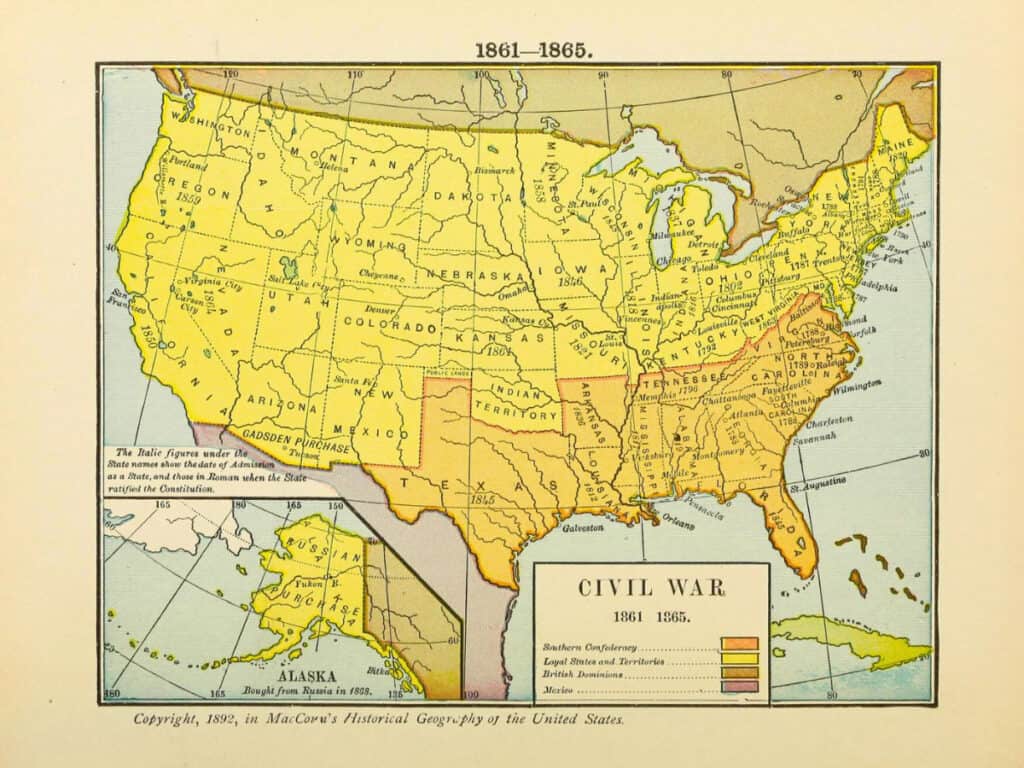
Census Bureau’s Southern Region Definition
Today, according to the United States Census, the southern states include:
- Alabama
- Arkansas
- Delaware
- District of Columbia
- Florida
- Georgia
- Kentucky
- Louisiana
- Maryland
- Mississippi
- North Carolina
- Oklahoma
- South Carolina
- Tennessee
- Texas
- Virginia
- West Virginia
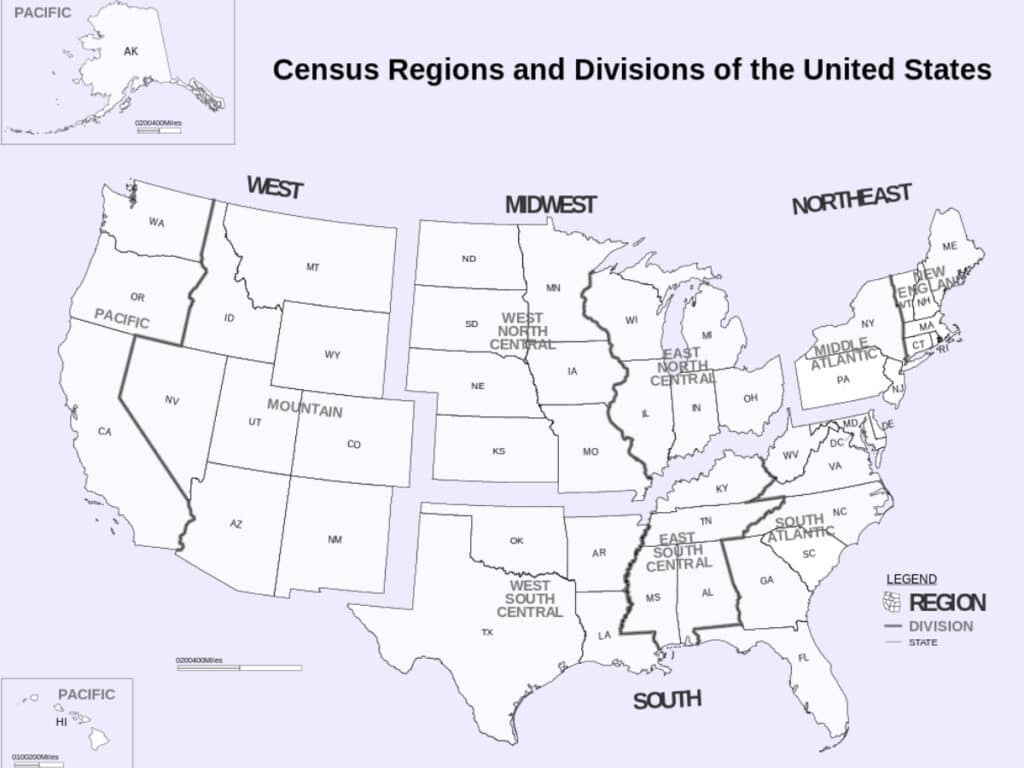
Council of State Governments’ Southern State List
The Council of State Governments (CSG), a nonpartisan, non-profit organization in the United States that serves all three branches of state government, uses an even broader definition to answer what are the southern states.
Their definition of what states are southern includes:
- Alabama
- Arkansas
- Florida
- Georgia
- Kentucky
- Louisiana
- Mississippi
- Missouri
- North Carolina
- Oklahoma
- South Carolina
- Tennessee
- Texas
- Virginia
- West Virginia
MISSOURI: A Geographic Conundrum
Interestingly, the classification of Missouri as a Southern state is a subject of debate.
The United States Census Bureau does not include Missouri in its list of Southern states, while the Council of State Governments counts Missouri among the South.
Missouri’s status as a Southern state can fluctuate depending on the source and context.
Is Missouri Southern? Unravel the Mystery!
👉 Curious? Head over to Is Missouri In the South? Exploring the Regional Riddle for the full breakdown.
Federal Aviation Administration, Agricultural Research Service, and United States National Park Service Definition
The Federal Aviation Administration, the Agricultural Research Service, and the National Park Service broaden their definition of southern to include:
- U.S. Virgin Islands
- Puerto Rico
THE SOUTHERN ENIGMA
The multitude of lists we’ve dissected perfectly encapsulates the inherent complexity in defining the South!
Thus, when asked, “What states are considered southern?” the response may be as varied and intricate as the South’s own rich heritage. This exploration underlines why the concept of ‘Southern’ states can be so elusive and subject to interpretation.
It’s no surprise, then, that the delineation of Southern states often leaves people in a state of bewilderment!”
Popular American Definition
In the United States, the states typically associated with the cultural, historical, and geographic characteristics commonly attributed to the South are:
- Alabama
- Arkansas
- Florida
- Georgia
- Kentucky
- Louisiana
- Mississippi
- North Carolina
- Oklahoma
- South Carolina
- Tennessee
- Texas
- Virginia
- West Virginia
Popular Global Definition
Around the world, the perception of the South within the United States may vary, but some states are often recognized as representative of the Southern region because they are frequently highlighted in movies, music, and literature.
These states are often associated with cuisine, music genres like blues and country, and historical events such as the Civil War and the Civil Rights Movement.
The states that are most commonly associated internationally include:
- Texas
- Florida
- Louisiana
- Tennessee
- Mississippi
- Georgia
- Alabama
- South Carolina
- North Carolina
| Southern State Classifications | ||||
|---|---|---|---|---|
| Original | Confederate | Census | US Common View | Global Common View |
| Maryland | South Carolina | Alabama | Alabama | Texas |
| Virginia | Mississippi | Arkansas | Arkansas | Florida |
| North Carolina | Florida | Delaware | Florida | Louisiana |
| South Carolina | Alabama | District of Columbia | Georgia | Tennessee |
| Georgia | Georgia | Florida | Kentucky | Mississippi |
| Louisiana | Georgia | Louisiana | Georgia | |
| Texas | Kentucky | Mississippi | Alabama | |
| Virginia | Louisiana | North Carolina | South Carolina | |
| Arkansas | Maryland | Oklahoma | North Carolina | |
| Tennessee | Mississippi | South Carolina | ||
| North Carolina | North Carolina | Tennessee | ||
| Oklahoma | Texas | |||
| South Carolina | Virginia | |||
| Tennessee | West Virginia | |||
| Texas | ||||
| Virginia | ||||
| West Virginia | ||||
| © scribblesandgrits.com | ||||
The Deep South: Civil War Landscapes
The birthplace of the Confederacy, steeped in the pivotal events of the Civil War.
What is the Deep South?
The “Deep South” refers to a specific subregion within the Southern United States known as the heart of the antebellum plantation economy, where large-scale agricultural enterprises, predominantly based on slavery, thrived before the Civil War.
What States Are Considered The Deep South?
- Georgia
- Alabama
- Mississippi
- Louisiana
- South Carolina
The region’s economy, deeply intertwined with slavery, provided the fertile ground for the contentious states’ rights debate, which ultimately resulted in the secession of 11 states to form the Confederate States of America.
The Confederate States: Heart of the South
The 11 states in the lower South that incited one of history’s most impactful civil wars:
- South Carolina
- Mississippi
- Florida
- Alabama
- Georgia
- Louisiana
- Texas
- Virginia
- Arkansas
- North Carolina
- Tennessee
Timeline of Secession
1860:
- December 20: South Carolina left the Union.
1861:
- January 9: Mississippi declared its departure from the Union
- January 10: Florida detached itself from the Union
- January 11: Alabama disassociated from the Union
- January 19: Georgia split from the Union
- January 26: Louisiana withdrew from the Union
- February 1: Texas disjoined from the Union
- April 12: The Civil War began with the Battle of Fort Sumter in Charleston Harbor, South Carolina
- April 17: Virginia withdrew from the Union
- May 6: Arkansas disassociated from the Union
- May 20: North Carolina detached itself from the Union
- June 8: Tennessee split from the Union
1865:
After four grueling years of conflict, the Confederate flag fell, and the Civil War ended with the defeat of the Confederacy. This marked a transformative period.
Slavery was abolished by the 13th Amendment, and a new era dawned on the South. However, the 11 Confederate states continue to define the South, representing over 50 percent of the Civil War’s historic sites and embodying the region’s rich cultural heritage.
NOTE
The secession dates are when the states officially declare their secession. The actual process of secession was often more complex and drawn out.
🔔 The war may have ended, but its echoes carried on…
Reconstruction And The Rise Of Jim Crow Segregation
The Reconstruction Era (1865-1877) aimed to rebuild the war-torn South and finally establish equal civil rights for newly freed African Americans in states in the South.
However, defiant resistance from most white Southerners in Alabama, Mississippi, and other states eventually led to the rollback of black rights and the imposition of oppressive Jim Crow laws strictly enforcing racial segregation in all public facilities.
Only when the hard-won victories of the 1950s-60s Civil Rights Movement did these institutionalized discriminatory policies in Delaware, Alabama, and other states in the South finally fully unravel under the leadership of courageous figures like Rosa Parks, Rev. Martin Luther King Jr., and others in states that make up the Southern region.
The Complicated Legacy Of Race Relations And Identity
The rich history of the southern United States encompasses a complex tapestry of events, including slavery, systemic racism, division, and inequality, notably highlighted by events like the Civil War.
This profound historical impact continues to shape society and regional identity in the South. Moreover, the struggle for racial justice and the invaluable contributions of African American culture have become integral to this region’s heritage.
Southerners take pride in their history, recognizing its significance as a vital part of their identity while actively seeking to overcome the legacy of the slave state’s past.
This historical significance continues to shape the region’s race, politics, and cultural matters.
For those intrigued by Southern history, the Blue Ridge Mountains, and pivotal battles, further exploration awaits. Feel free to delve deeper into this compelling narrative and share these stories to connect with like-minded individuals.
Unique Aspects of Southern Culture
Southern Culture encompasses a range of distinct traditions that have greatly enriched American art, food, faith, music, and literature.
These cultural elements, deeply rooted in the history and heritage of the South, have left an indelible mark on the broader American cultural landscape, offering a unique and vibrant patchwork of traditions.
Southern Cuisine Reflects Deep Roots
Southern cuisine is woven from the diverse threads of Native American ingredients, African cooking methods, and the experiences of enslaved people and resourceful rural farmers.
It reflects a melting pot of flavors and techniques passed down through generations, creating a culinary legacy deeply rooted in history.
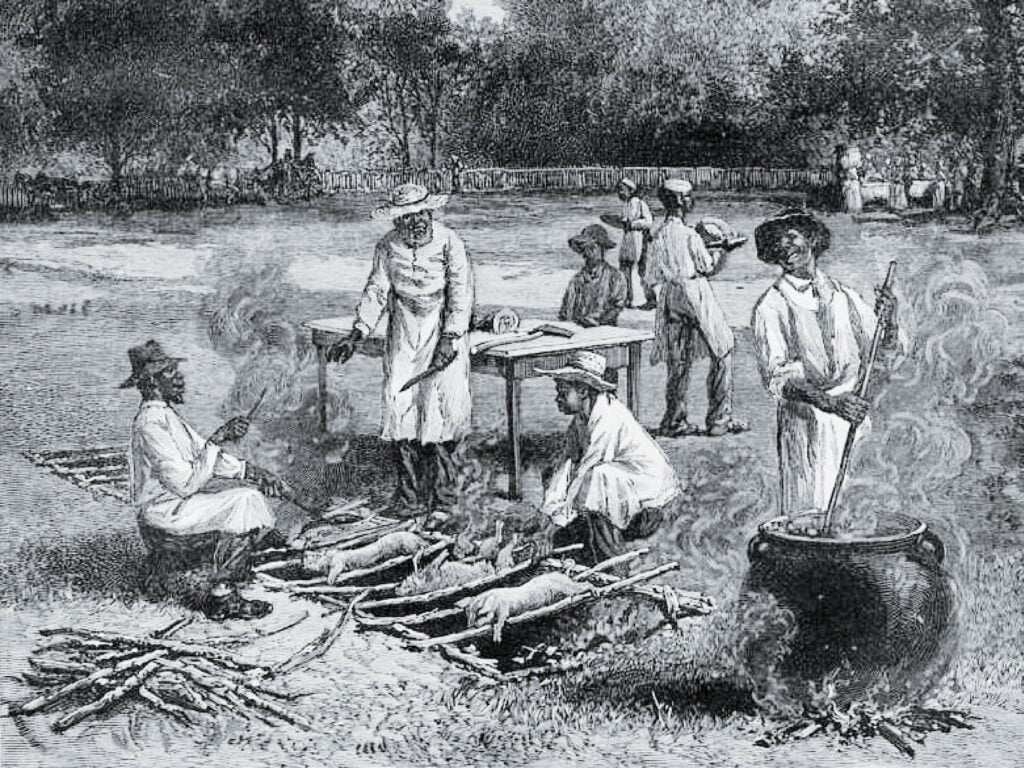
Native American Influences
- Staple crops like corn, beans, and squash provided the base for many dishes.
- Fry bread techniques inspired Southern hush puppies.
- Smoking and marinating practices used in Southern barbecue
African Influences
- Ingredients like okra, yams, black-eyed peas, leafy greens
- Rice-based dishes in the Low Country Gullah Geechee tradition
- Enslaved plantation cooks developed fried chicken and collard greens
- African spices used in Creole cooking
Generations of Southerners transformed simple available ingredients into the hearty, flavorful cuisine we recognize today. The complex blend of cultures created the American Southern food identity.
The Soundtrack of America Emerged from the South
The South gave birth to many quintessentially American musical genres, profoundly impacting modern popular music.

- Country ballads have origins in the Appalachian Scots-Irish folk songs. Nashville became the heart of country music.
- The blues emerged from Mississippi Delta towns with deep soulful sounds.
- Bluegrass blended fast-paced country, gospel harmonies, and bluesy nostalgia.
- New Orleans sparked innovative jazz offshoots like Dixieland jazz.
- Early rock legends from Elvis Presley to Jerry Lee Lewis started in the South.
This rich musical heritage spread worldwide, taking Southern sounds to international audiences.
Southern Literature and Shared Identity
Distinct Southern literary genres like Southern Gothic explored social dynamics and encapsulated the essence of the South:
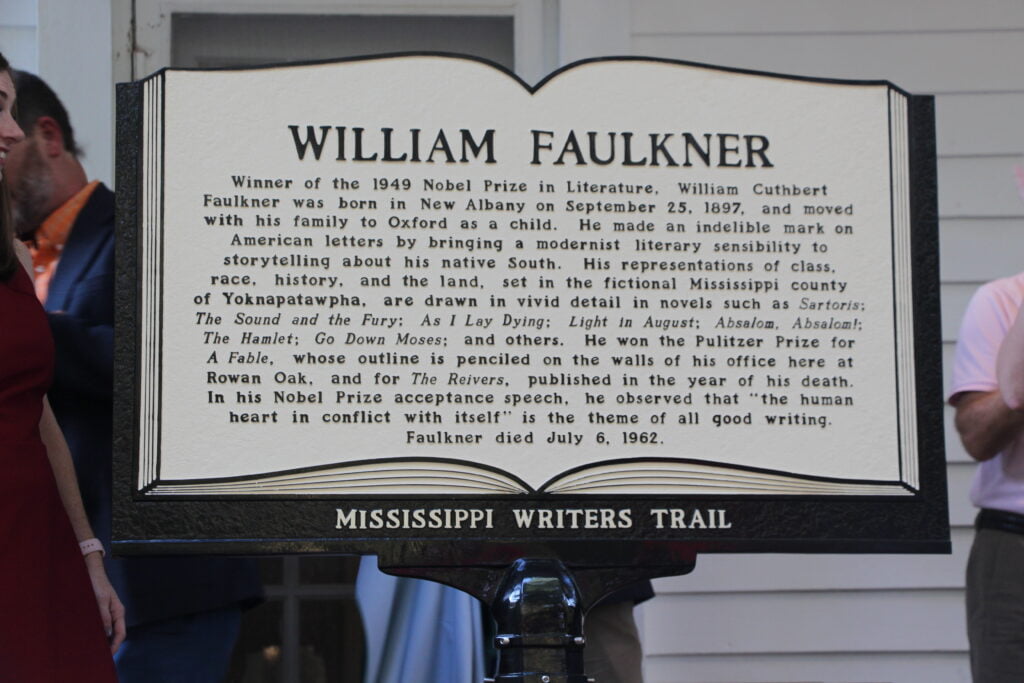
- William Faulkner examined once-powerful decaying Mississippi families and racial dynamics.
- Flannery O’Connor wrote on morals and modern alienation in rural Georgia.
- Harper Lee’s To Kill a Mockingbird spotlighted racial injustice in Alabama.
These works resonated by probing the most pressing Southern concerns of their eras.
The Abiding Role of Evangelical Faith
Evangelical Christian denominations, especially the Southern Baptist Convention, have long dominated the religious landscape of the South. Church attendance rates remain markedly higher across the South than in other United States regions.
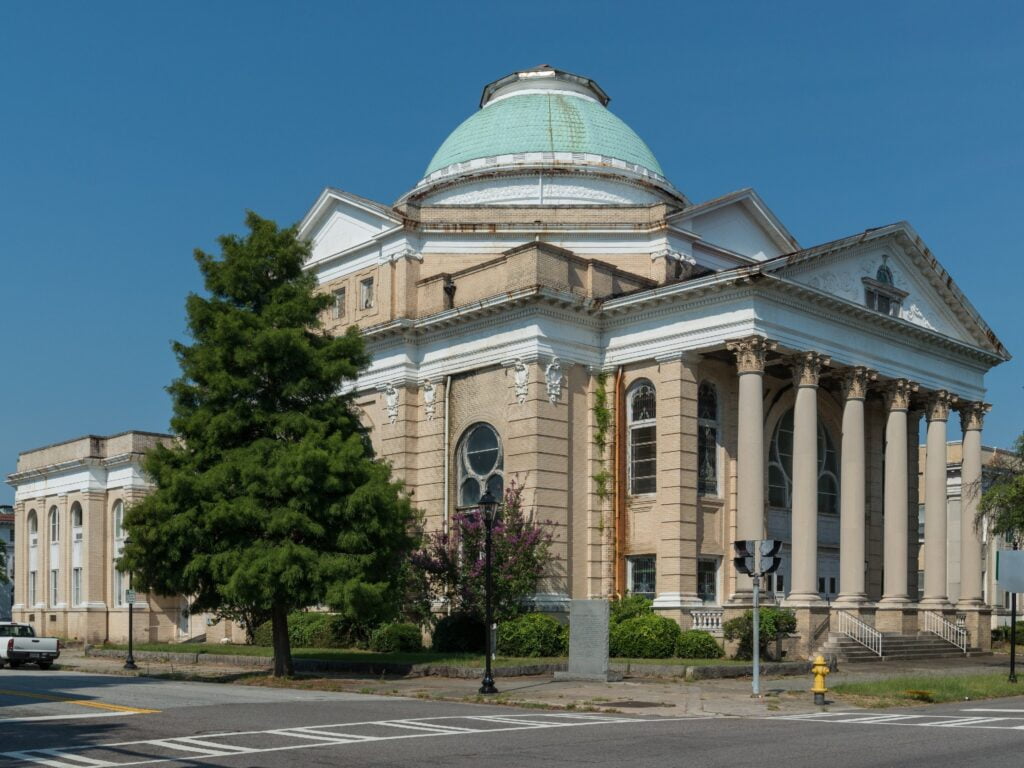
This deep vein of faith forms many aspects of the culture and perspectives:
- Church life provides a social anchor for many communities. Wednesday prayer meetings, potlucks, choirs, and faith outreach shape local social calendars.
- The political views of many Southerners align with conservative evangelical principles on issues like abortion and gay marriage. The “Bible Belt” is a prominent Republican stronghold.
- Rates of religious volunteering and donations exceed national averages, reflecting faith put into action.
- Education debates have centered around prayer in schools, evolution, and other church-state clashes.
- Strict morality codes on alcohol consumption or racy entertainment derive from evangelical Baptist standards.
Though the dominance of evangelical Christianity has declined somewhat in recent decades, its lineage remains woven into Southern lifestyles and worldviews. The church provides a gathering point anchoring many Southern towns.
The Complexities of Defining Southern Borders
Defining the borders of the American South is a complex task with differing perspectives and interpretations.
The complexity arises from various factors, each contributing to the multifaceted identity of the South, both historically and in the present day.
Peripheral Southern States
What States Do Not Fully Feel Southern?
While these states share many Southern characteristics, they’re often seen as less central to core Southern identity—by both locals and outsiders. Here’s a quick look at why:
Florida
- North Florida: Feels traditionally Southern.
- South Florida: Strongly shaped by Latin American and Caribbean influences.
- Result: A cultural blend of Southern and non-Southern traits.
Texas
- East & Central Texas: Reflect traditional Southern culture.
- Statewide: Merges Western, Southern, and Mexican identities.
- Result: A one-of-a-kind mix—not purely Southern.
Virginia
- Historical ties: A key player in the Confederacy and Civil War.
- Northern Virginia: More multicultural, urban, and tied to D.C.
- Result: Southern in heritage, mixed in modern identity.
Maryland
- Southern Maryland: Shows stronger Southern influence.
- Baltimore & D.C. suburbs: Feel more Mid-Atlantic.
- Result: A cultural split across the state.
Oklahoma
- Eastern Oklahoma: More aligned with Southern culture.
- Western & Northern areas: Feel strongly Midwestern.
- Result: A crossroads of Southern and Midwestern vibes.
Other States Often Debated
- Delaware: Rarely considered Southern; more Mid-Atlantic.
- West Virginia: Leans Appalachian, not traditionally Southern.
- Kentucky & Missouri: Split identities—Southern in parts, Midwestern in others.
NOTE
These “in-between” states show how Southern identity isn’t just about geography.
It’s shaped by culture, history, and local pride—sometimes even county by county.
Individual perceptions of Southern identity can differ, and the traits and impacts of Southern culture can vary within each state.
The Question Of Border States
The categorization of border states is another area of contention. These states had institutions of slavery but did not secede from the Union to join the Confederacy during the Civil War. This unique position has led to ongoing debates about their classification.
Kentucky and Missouri, despite allowing slavery, remained in the Union during the Civil War. However, they had Confederate factions and identity ties to the South, blurring the lines of their regional affiliation.
Unique Sub-Regions Within The South
The South is not a monolithic entity but a region marked by distinct cultural zones, each with unique characteristics. These include:
- Appalachia, a region that stretches across the Appalachian Mountains
- The Low Country along the Atlantic seaboard
- Areas like the Upland South and Piedmont
- Creole Louisiana, a part marked by a rich Creole influence
- The Ozarks and Upper South
The Concept of the New South vs. the Old South
The concept of the New South versus the Old South further complicates the region’s identity. The New South is often depicted as a more diverse, urban, and globally integrated region that has emerged since the Civil Rights era.
In contrast, the Old South is associated with a more rural lifestyle and the plantation economy.
The Mason-Dixon Line as Symbolic Dividing Line
The Mason-Dixon line, originally the 18th-century boundary between Pennsylvania and Maryland, has come to symbolize the division between the Northeast and the South.
This symbolic dividing line underscores the perceived isolation of the South from the rest of the country, further contributing to the complexities of defining its borders.

But borders aren’t just drawn on maps — they’re shaped by politics, identity, and pride…
Political Factors Also Shape Perspectives
Political disputes and ideologies have significantly shaped the regional identity of the South and the debates over its borders.
These factors, ranging from differing visions of states’ rights and federal power to personal identity and census classifications, contribute to the complex definition of the South.
Different Visions of States’ Rights and Federal Power
Many Southerners have staunchly advocated for states’ rights against federal power since the nation’s founding.
This issue was central to the tensions between the South and the North, particularly during the Civil War and the era of segregation.
This suspicion of Washington, DC, and the federal government continues to be a significant aspect of Southern political culture.
Personal Identity Drives Views
Personal identity also plays a decisive role in shaping one’s views on Southern regional boundaries.
Connections to Southern traditions, family heritage, and lived experiences allow a more flexible interpretation of the Southern borders.
This personal identity often ties in with regional pride and a deep connection to the region’s rich history and traditions.
Census Classifications Complicate Things
The Census Bureau’s definition of the South includes states stretching from Maryland to Texas, a significantly broader interpretation than other sources.
This classification by the federal government introduces another perspective into the discussion, further complicating the definition of the South.
There’s No Consensus, And That’s Okay
Inhabitants’ diverse politics and personal experiences ensure no consensus on the bounds of Southern identity.
However, these varied views and nuanced perspectives reflect the richness of Southern regional traditions and the region’s ethnically diverse population.
Despite Changes, Southern Identity Endures
Despite immense changes since the era of plantations and segregation, modern Southern identity persists and continues to evolve.
This enduring identity is a testament to the resilience of the South and its people.
The Political History Remains Relevant
The South’s political history, marked by the Confederacy, slavery, and Jim Crow laws, has left a legacy of inequality.
While some cling to false narratives of the past, the contributions of African American culture and leaders like Dr. Martin Luther King Jr. are rightfully celebrated.
This complex past remains relevant in discussions about the South’s identity.
Cultural Traditions Anchor Identity
Despite globalization and modernization, vibrant Southern traditions like faith, food, language, music, and community have endured.
These cultural traditions, from soul food and barbecue to country and blues music, have adapted over time but continue to provide a sense of continuity and identity for the South.
The Debates Reinforce Shared Identity
The ongoing debates over the South’s borders and identity reinforce the interconnected identities of Southerners.
These discussions invite participation in shaping a collective Southern consciousness, further strengthening the region’s shared identity.
The Evolution of Southern Identity in the 21st Century
The concept of what makes a state “southern” continues to evolve in significant ways as the region undergoes demographic, economic, and cultural transformations. This evolution reflects both the rich heritage of the South and its adaptation to contemporary realities.
Urban Growth and Demographic Shifts
The South has experienced some of the nation’s fastest urban growth in recent decades, reshaping traditional notions of southern identity:
- Metro areas like Atlanta, Charlotte, Nashville, and Austin have become economic powerhouses attracting residents from across the country and around the world
- Many southern cities now feature diverse, cosmopolitan populations that blend traditional southern culture with international influences
- These urban centers often contrast sharply with their surrounding rural areas in terms of politics, values, and lifestyle
This urban-rural divide has created what some scholars call “two Souths” – cosmopolitan cities alongside more traditional rural communities, both claiming authentic southern identity.
Economic Transformation
The economic landscape of southern states has dramatically shifted from primarily agricultural to increasingly diverse:
- The rise of technology corridors like North Carolina’s Research Triangle and Austin’s tech scene
- Manufacturing growth, particularly in the automotive industry across Tennessee, Alabama, and South Carolina
- Healthcare and education becoming major economic drivers in cities like Houston, Nashville, and Birmingham
- Tourism centered on both natural attractions and southern cultural heritage
These economic changes have brought prosperity to many areas while creating new challenges for traditional southern communities adjusting to globalized economies.
Cultural Blending and Southern Pride
Contemporary southern identity increasingly embraces both traditional elements and new influences:
- Southern food traditions now incorporate international flavors while preserving classic techniques
- Music scenes blend traditional country, blues, and gospel with hip-hop, alternative, and global genres
- Literature and media portray more complex, nuanced views of southern life beyond stereotypes
- Younger southerners often express regional pride while rejecting historical symbols associated with racism
This cultural evolution demonstrates how southern identity remains resilient by adapting while maintaining connections to its distinctive heritage.
Why Definitions of “Southern States” Vary So Widely
The question of what states are truly southern generates such varied answers because regional identity is inherently complex and multifaceted.
Several key factors contribute to these differing perspectives:
Historical vs. Contemporary Frames of Reference
- Historical perspective: Defines the South primarily through its Confederate past and pre-Civil War plantation economy
- Contemporary perspective: Considers current cultural practices, demographic patterns, and self-identification
- Generational differences: Older and younger southerners often define regional boundaries differently based on their lived experiences
Objective vs. Subjective Criteria
- Objective measures: Geographic location, climate patterns, census designations
- Subjective elements: Cultural practices, accents, food traditions, religious patterns
- Self-identification: Whether residents themselves identify as southern
Official vs. Cultural Definitions
- Government definitions: Census Bureau classifications serve administrative purposes but may not align with cultural realities
- Cultural definitions: Based on shared practices, values, and traditions that transcend political boundaries
- Media portrayal: How southern identity is represented in film, television, and literature shapes external perceptions
Political Motivations
Regional definitions sometimes serve political purposes:
- Including or excluding certain states from “the South” can frame political narratives
- Regional identity can be emphasized or downplayed depending on electoral strategies
- Historical associations may be embraced or rejected based on contemporary political concerns
Understanding these varying perspectives helps explain why the question “What states are southern?” generates such diverse and sometimes passionate responses.
The South, perhaps more than any other American region, continues to negotiate its boundaries and identity in response to changing circumstances while maintaining its distinctive regional character.
FAQ about Southern States
Watch the Southern States Light Up by Region
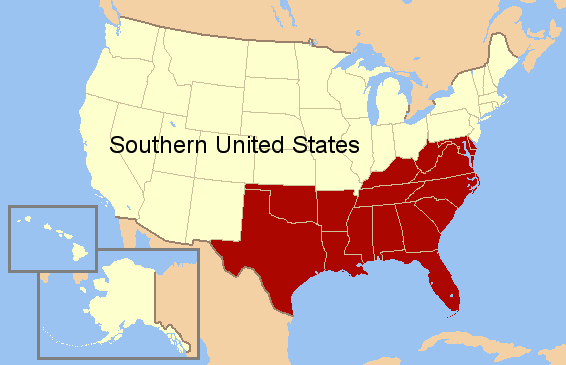
🎬 Explore the Southern Regions by Sub-Group in This Animated U.S. Map
Watch as each section lights up — from the Deep South to the Gulf States — and see how the South is defined through shifting regional lenses.
CREDIT: Astrokey44 derivative work: Swarm, CC BY-SA 3.0 via Wikimedia Commons
My Final Thoughts
The Southern United States is a region rich in natural beauty, cultural heritage, and deep-rooted complexity. From Alabama to Oklahoma to Delaware, each state contributes a unique thread to the South’s ever-evolving story.
When exploring what states are southern, we uncover more than just borders — we reveal a region shaped by tradition, tension, resilience, and pride. From the bayous of Louisiana to the foothills of the Carolinas, the South carries a legacy both celebrated and contested.
Understanding what states are southern helps us appreciate the region’s diversity — not just in geography, but in spirit. Whether defined by history, culture, or self-identification, the South continues to stand apart as a distinctive and dynamic part of the American experience.
Scribble Of The Day: Southern States Quote




